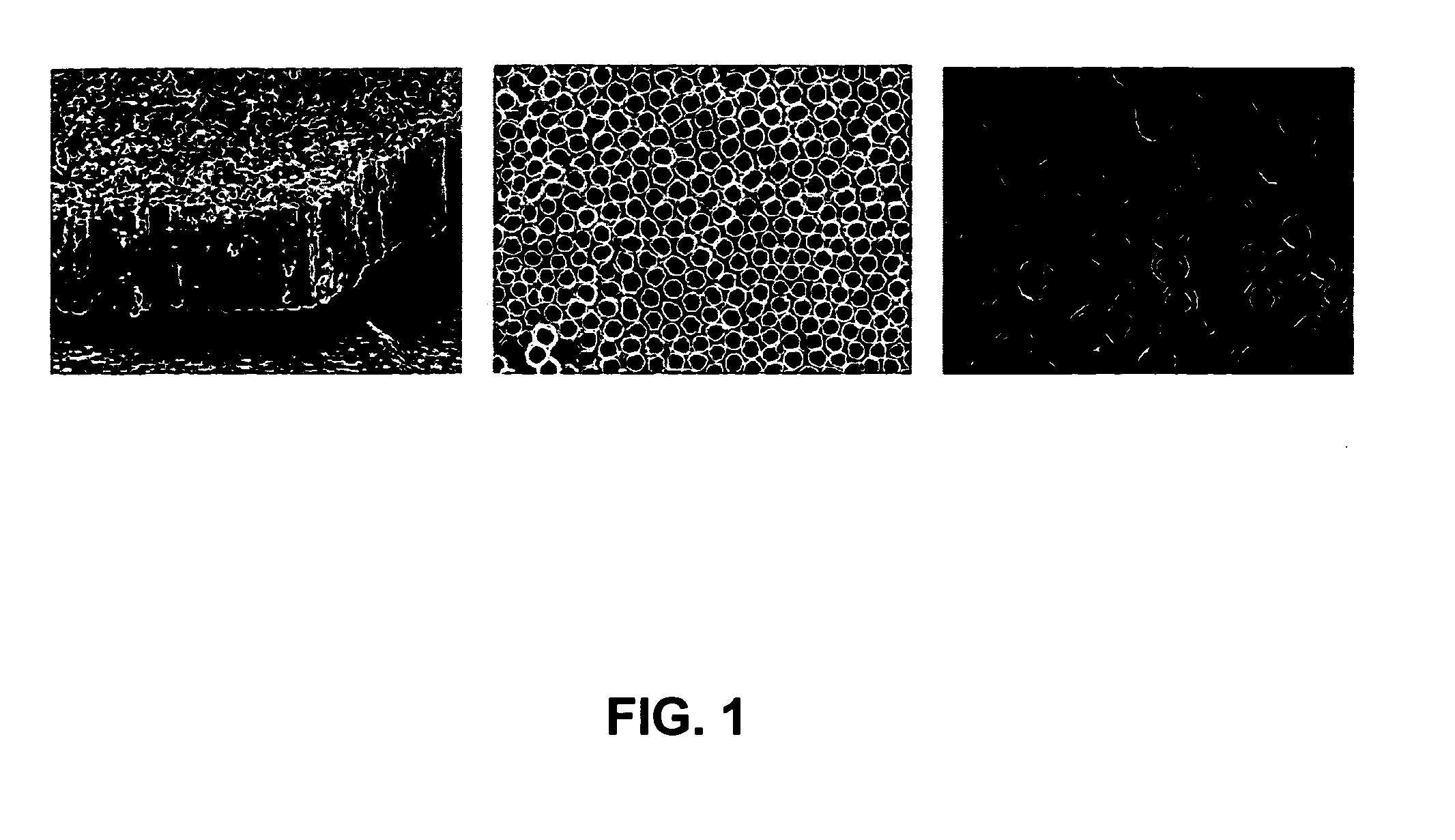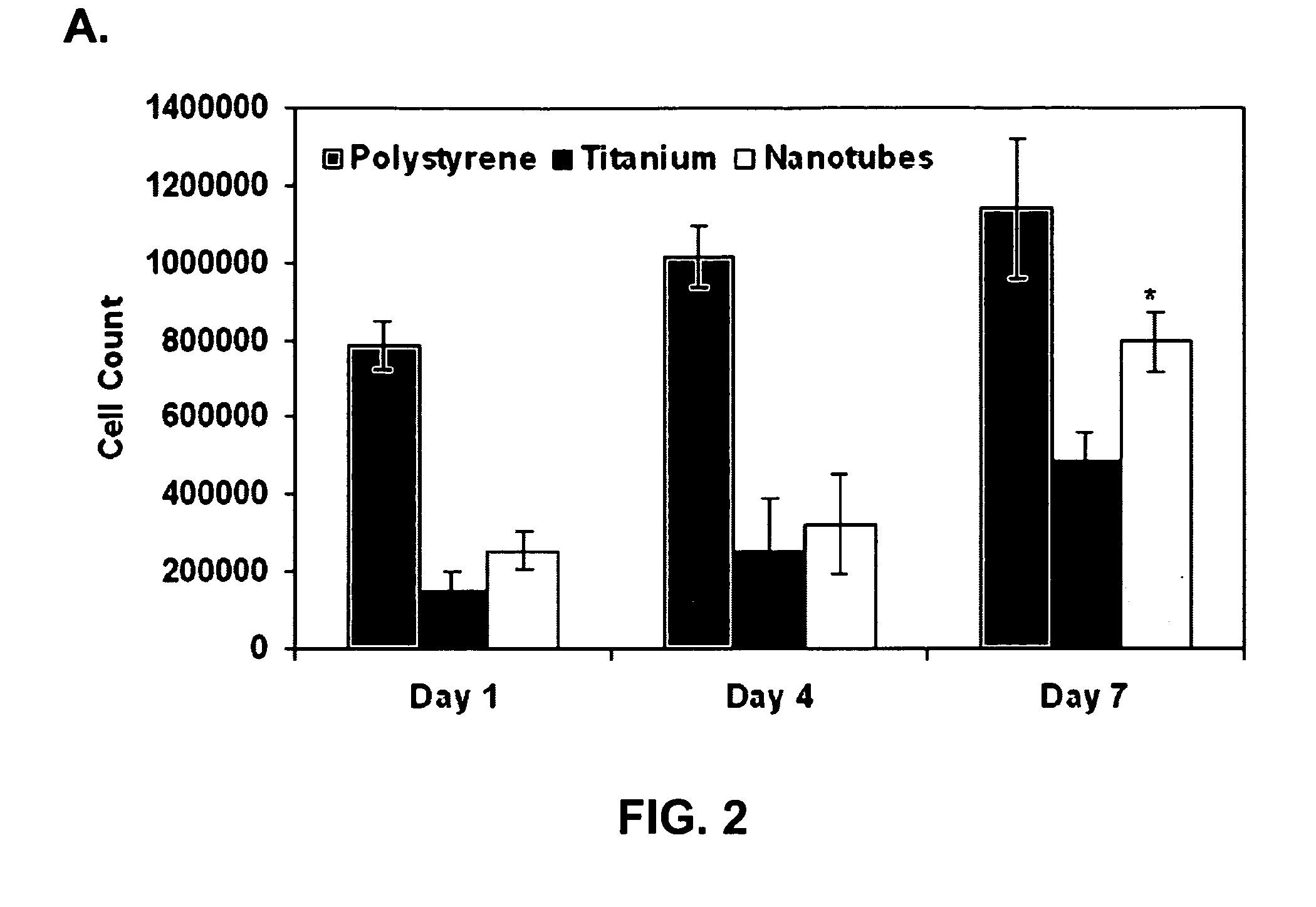Nanostructure surface coated medical implants and methods of using the same
a technology of nanostructure and implants, applied in the field of nanostructure surface coated medical implants, can solve the problems of poor outcome of original joint replacement surgery, difficult and costly surgery to replace these failures, and loosening of implants,
- Summary
- Abstract
- Description
- Claims
- Application Information
AI Technical Summary
Benefits of technology
Problems solved by technology
Method used
Image
Examples
example 1
Fabrication of Nanotubular Surface Coated Implants
[0108]The results show development of nanotubular surfaces that can be applied to existing implants, thereby providing a strategy that can be applied quite readily in the clinical environment. The approach to achieving an optimal material nanoarchitecture uses a simple anodization technique to fabricate vertically oriented, immobilized, high-aspect ratio titania nanotube arrays. FIG. 1 shows an SEM image of titania nanotubes with pore size of approximately 80 nm and length of 400 nm prepared using anodization voltage of 20V for 20 mins. It can be seen that the nanotube array is substantially uniform over the substrate surface. There is a precise correlation between the anodization voltage and pore size, thus by varying the voltage and anodization time, substrates with different size scales can be fabricated (Mor et al., Journal of Materials Research 2003, 18(11):2588-93; Rougraff et al., J Bone Joint Surg Am 2002, 84-A(6):921-9). The...
example 2
[0118]Fabrication of Drug Eluting Nanotubular Surface Coated Implants
[0119]It was next determined whether the nanotubes may be filled with antibiotics that would ward off infection immediately after implantation (e.g., gentamicin, chlorhexidine diacetate, ciprofloxacin) or with growth factors or therapeutic proteins (e.g., TGF-β, IGF, BMP) that will help to stimulate cellular differentiation and bone repair processes. In this study, bovine serum albumin (BSA) and lysozyme (LYS) were used as model proteins to investigate their loading and release efficiencies from nanotube architectures. BSA is a larger molecule with a net negative charge at neutral pH compared to LYS which is smaller in size with a net positive charge at neutral pH (Table 2).
TABLE 2Molecular WeightIsoelectric PointNet charge(KDa)pI@ pH 7.0Bovine Serum674.7−18AlbuminLysozyme1411+7
[0120]Before the release studies were performed, it was important to evaluate the loading efficiency of the proteins on the nanotube surfac...
PUM
| Property | Measurement | Unit |
|---|---|---|
| length | aaaaa | aaaaa |
| length | aaaaa | aaaaa |
| diameter | aaaaa | aaaaa |
Abstract
Description
Claims
Application Information
 Login to View More
Login to View More - R&D
- Intellectual Property
- Life Sciences
- Materials
- Tech Scout
- Unparalleled Data Quality
- Higher Quality Content
- 60% Fewer Hallucinations
Browse by: Latest US Patents, China's latest patents, Technical Efficacy Thesaurus, Application Domain, Technology Topic, Popular Technical Reports.
© 2025 PatSnap. All rights reserved.Legal|Privacy policy|Modern Slavery Act Transparency Statement|Sitemap|About US| Contact US: help@patsnap.com



